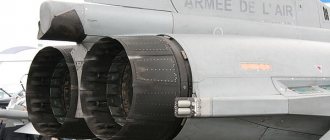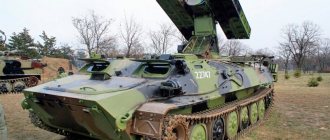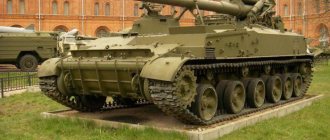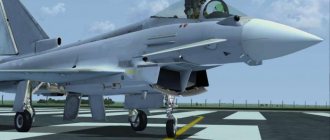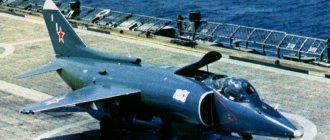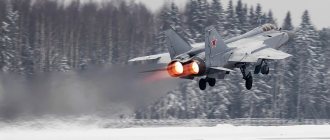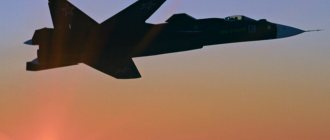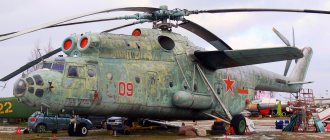09/05/2016 Category: Surface forces
- 2 History
- 3 Progress of modernization
One of the ships of the Northern Fleet, the cruiser Marshal Ustinov, is the second object built according to project 1164 Atlant. The ship was laid down and built at a construction plant in Nikolaev, launched in 1982 and included in the fleet in 1986.
↑ History of creation
As part of the Atlant project, the task was to build ten missile cruisers, of which only four have been built so far. "Marshal Ustinov" is one of the ships of this project. Its construction began in October 1978 at the Nikolaev Shipyard. Four years later, “Marshal Ustinov” was launched, and already in 1986 it was accepted into the Northern Fleet with full weapons on board. The main goal of building Atlant project cruisers is the security of vital ocean zones for the USSR, with the help of well-armed missile cruisers.
Commanders[ | ]
- Veregin Vladimir Dmitrievich (1984-1989), captain 1st rank,
- Frunza Grigory Ivanovich (1989-1991), captain 2nd rank,
- Avakyants Sergey Iosifovich (1991-1996), captain 1st rank,
- Kuliev Igor Nadyrovich (1996-1998), captain 1st rank,
- Sobgaida Andrey Vladimirovich (1998-2002), captain 1st rank,
- Zhuga Sergey Yurievich (2002-2005), captain 1st rank,
- Kravchenko Pavel Mikhailovich (2005-2008), captain 1st rank,
- Neklyudov Igor Vladislavovich (2008-2011), captain 1st rank,
- Alantyev Sergey Gennadievich (2011-2018), captain 1st rank,
- Kuzmin Vladimir Vyacheslavovich (2018 - 2020), captain 1st rank.
- Krivoguzov Andrey Yurievich (2020 - present), captain 3rd rank.
↑ Technical characteristics
- The ship's displacement is standard, as for ships of the Atlant project - 11 thousand tons;
- The length of Marshal Ustinov reaches almost 187 meters;
- The power of the Ustinov power plant is a total of 105 thousand horsepower;
- The cruiser's maximum speed is 32 knots;
- The maximum cruising range (at 18 knots) is 7-8 thousand nautical miles;
- The supply of fuel and food should easily be enough for one month (navigation autonomy);
- The ship's crew after modernization is 510 people.
↑ Armament
Like all cruisers of the Atlant project, Marshal Ustinov has powerful weapons capable of hitting underwater, land, air and surface targets within a huge radius. Artillery armament consists of one AK-130 artillery mount with two twin guns.
missile cruiser Marshal Ustinov photo
Anti-aircraft artillery is represented by six automatic large-caliber machine gun mounts with six barrels - AK-630. The cruiser's missile armament is a source of pride. On “Marshal Ustinov” it is installed:
- Sixteen P-1000 Vulcan missile systems capable of carrying nuclear warheads capable of hitting a target at a distance of up to 1000 km;
- it is also possible to fire high-explosive cumulative projectiles;
- 64 S-300F Fort launch systems, capable of hitting targets at a distance of up to 150 km;
- To fire at relatively close ranges, the cruiser is equipped with two Osa-MA missile systems, capable of hitting any targets at a distance of up to 15 km;
- The ship's torpedo armament consists of two torpedo tubes with a caliber of 533 mm;
- For air support, the cruiser can carry on board one multi-purpose Ka-27 helicopter.
Why did they make a completely new cruiser out of the Marshal Ustinov?
01.11.2016, shopping center "Zvezda".
The “brother” of the Project 1164 missile cruisers “Moskva” and “Varyag” - the first-rank ship "Marshal Ustinov" returns after a long repair to combat service in the Northern Fleet. The years at the quay wall of the shipbuilding plant in Severodvinsk were not in vain - a completely new ship appeared before us, equipped with powerful weapons and electronic equipment.
They had forgotten about the Marshal Ustinov, which had been undergoing scheduled repairs for five long years since 2011 - the name of the cruiser was mentioned in the press extremely rarely, and even then the information was limited to vague messages about the work being carried out. It seemed that this ship was lost to the fleet and was destined to gradually sink to the level of scrap metal. But no, the smoking room is alive! And how alive it is - it entered factory testing like new, leaving perhaps only the body and the previous name from its “past life”.
Many people have probably also forgotten about Dmitry Fedorovich Ustinov, whose name the missile cruiser bears since 1986. The marshal was related to the fleet only as the Minister of Defense of the USSR, a position he held from 1976 to 1984. His strong point was tank and missile forces, which were preferred in a possible war with NATO.
But Ustinov did not forget about the Navy either - during this period, dozens of warships entered service. And the Project 1164 cruiser, which originally bore the name “Admiral of the Fleet Lobov,” was also laid down when Dmitry Fedorovich was Minister of Defense. So the cruiser deservedly received its name in honor of the “land” commander, and the ship’s crew members proudly call themselves “Ustinovites.”
During that period, three more missile cruisers of this project were laid down - “Varyag”, “Moskva” and “Ukraine”. The first two are the pride of the Russian Pacific and Black Sea fleets and worthily maintain a combat watch in various waters of the World Ocean. The fate of the “junior” - “Ukraine”, which fell during the division of the Independence fleet, is regrettable.
This ship never went to sea due to lack of funds and is quietly rusting in the docks of the Nikolaev Shipyard, becoming... a museum of something unknown. Negotiations about the purchase of this ship by Russia have been raised more than once, but to no avail. In Kyiv they stubbornly insist that “nothing for the Muscovites”, and there are simply no other buyers capable of bringing the cruiser back to life.
"Marshal Ustinov" from the first days of joining the Northern Fleet became an exemplary ship in all respects. Its first commander, Captain 2nd Rank Vladimir Verigin, managed to lay down those good naval traditions that the current Ustinovites also observe - combat power, multiplied by the skill and discipline of the crew.
Needless to say, the cruiser, which “didn’t get out” of long voyages, was polished from top to bottom, and the copper coamings could be looked at like a mirror. It is no coincidence that in 1989, it was “Marshal Ustinov”, under the pennant of the then first deputy commander of the Northern Fleet, Vice Admiral Igor Kasatonov, who went on a visit to Norfolk, the US naval base.
By the way, Admiral Kasatonov was partial to the Project 1164 Atlant cruisers and valued them for their ocean-going performance and striking power of weapons capable of effectively resisting surface, underwater and airborne enemies. It is no coincidence that when he was the commander of the Black Sea Fleet, Igor Vladimirovich preferred to raise his pennant on the Moskva, the “twin brother” of Marshal Ustinov.
Over the years of service, the missile cruiser "Marshal Ustinov" not only made friendly visits. This ship completed over 370 combat exercises using missile, artillery and anti-submarine systems. During his campaigns, he covered almost 150 thousand nautical miles (6 times along the equator around the Earth!), and spent 1089 days on the open sea.
In 1987-88 and 1989, the cruiser served in the Mediterranean Sea as part of the Soviet naval group. After scheduled repairs in 1997, “Marshal Ustinov” went to the Atlantic, and then for a long time took part in patrols in the Arctic Ocean around the island of Spitsbergen, ensuring the safety of Russian fishing vessels in the region. I walked quite a bit.
If we talk about the modernization that was carried out on this ship during the repairs at Zvezdochka, we should dwell on its armament. The main thing, as the name suggests, is rocket-based. This is the 16th launcher of the anti-ship missile complex (Basalt launcher).
This is a missile weighing 6 tons and a flight speed of 3077 km/h, with partial armor, equipped with a powerful (500 kg) conventional high-explosive-cumulative or nuclear (350 kg) warhead and is capable of hitting targets at a range of up to 1000 kilometers. The flight of this anti-ship missile is carried out along a complex trajectory, it is equipped with a telecontrol system and an on-board station for electronic countermeasures against the air defense systems of the attacked ship.
The cruiser carries on board 96 jet depth charges (RBU-6000) that destroy enemy torpedoes and submarines at a range of 6 kilometers at a diving depth of 500 meters (the American Virginia-class nuclear submarine is capable of diving to a maximum of 488 meters). 10 torpedoes with a caliber of 533 mm destroy targets at a distance of 22 kilometers, moving towards them underwater at a speed of 100 km/h.
Anti-aircraft weapons are represented by the S-300F “Fort” (“Reef”) air defense system, which can hit air targets at a horizontal range of 90 and a vertical range of 25 kilometers. Plus 6 anti-aircraft 30 mm AK-630 installations with a rate of fire of 6000 rounds per minute. Dual 130 mm AK-130 cannons with a rate of fire of 90 rounds per minute and a range of 24 kilometers are also capable of hitting aerial targets. They also fire at surface targets with success. The cruiser's armament also includes the Ka-27 helicopter (or its modification), for which there is a platform at the stern of the ship.
During the modernization of the Marshal Ustinov, new radar stations were installed. The cruiser received a three-dimensional early warning radar "Podberezovik" and a "Fregat-M2M" station with phased antenna arrays optimized for detecting low-flying targets. The modernization work affected all the cruiser's main radio-electronic weapons systems, including electronic warfare (electronic warfare) systems, which make it possible to make the ship invisible to enemy guidance systems.
The Zvezdochka shipbuilders replaced the entire internal “stuffing” with the Marshal Ustinov, from cables to gas turbine units, which allow the cruiser to reach a speed of 32 knots. The cruiser, with a crew of almost 500 people, has a navigation autonomy of 30 days and is capable of covering more than 7,500 nautical miles during this time.
“This is a completely new ship,” says Admiral Vladimir Komoyedov. – Its introduction into the fleet after deep modernization is very timely right now. Considering that an aircraft carrier strike group led by the Admiral Kuznetsov and the heavy nuclear-powered missile cruiser Pyotr Velikiy left the North to carry out tasks in the Mediterranean, the missile cruiser Marshal Ustinov will be a good reinforcement for the rest of the fleet forces in this region.
And it seems to me that the time has already come for such modernization for the missile cruiser "Moscow", primarily in terms of anti-aircraft missile weapons, and the gas turbines on it require replacement. The experience of shipbuilders will now allow such work to be carried out much faster.”
Marshal Ustinov in the Northern Fleet really won’t be bored at the berth – there’s plenty of work to do. But, as expected, next year the cruiser will have to “escape” to the Mediterranean Sea as part of the rotation of ships of the Russian Mediterranean ship group. This is already a common practice when the ships of our Navy carry out combat watches in different parts of the World Ocean - where there is state expediency.
Author: Victor Sokirko
Section: Analytics
↑ Service history
A year after construction, “Ustinov” was already in combat service in the waters of the Mediterranean Sea. In 1989, the cruiser visited the US military base in Norfolk on an official visit. From 1994 to 1997, the cruiser was under repair to replace the power plant. In 2001, he again went to repair navigation systems.
cruiser Marshal Ustinov photo
In 2008, he was engaged in patrolling the Arctic Ocean. Since 2011, the cruiser has been undergoing major repairs. At the moment, the repair work is approaching the final stage, and it is planned to test the ship at the end of 2020. In 2020, “Marshal Ustinov” is scheduled to return to the fleet.
Notes[ | ]
- RIA Novosti - The missile cruiser "Marshal Ustinov" went to sea after repairs.
- Russian warships have resumed patrols in the Arctic - Interfax (verified 07/22/2008)
- The missile cruiser "Marshal Ustinov" began patrolling the Arctic - Lenta.ru (verified 07/22/2008)
- “Zvezdochka” completed factory repairs of the missile cruiser “Marshal Ustinov” // TASS, December 26, 2016
- Soviet “old men” will remain the main ships of the Navy // Vzglyad, June 6, 2019
- The cruiser "Marshal Ustinov" should return to the Russian Navy at the end of 2015 // RIA Novosti, 12/1/2014
- The modernized cruiser “Marshal Ustinov” will be transferred to the Navy in 2015 // Sudostroenie.info (05/3/2015).
- The repaired Marshal Ustinov will go to sea in the third quarter of 2020 (Russian). FlotProm. Retrieved July 29, 2018.
- "Marshal Ustinov" will begin sea trials in the fall (Russian). FlotProm. Retrieved July 29, 2020.
- The cruiser "Marshal Ustinov" will begin testing at sea after repairs at the end of October (Russian), TASS
. Retrieved July 29, 2020. - 2016-10-30 16:43:00 Zvezdochka_ru Zvezdochka_ru 2016-10-30 16:43:00 Zvezdochka_ruwrote.
The missile cruiser "Marshal Ustinov" went to sea. Retrieved July 29, 2020. - 2016-11-30 14:01:00 Zvezdochka_ru Zvezdochka_ru 2016-11-30 14:01:00 Zvezdochka_ruwrote.
Tests of the missile cruiser Marshal Ustinov have been completed. Retrieved July 29, 2020. - The cruiser "Marshal Ustinov" returned to service after five years of repairs (unspecified)
. Central Naval Portal. Retrieved July 29, 2018. - RK "Marshal Ustinov" arrived at the main base of the Northern Fleet | Weekly "Military-Industrial Courier" (unspecified)
. vpk-news.ru. Retrieved December 31, 2020. - The missile cruiser "Marshal Ustinov" was returned to service after 6 years of repairs (unspecified)
. RBC. Retrieved July 29, 2020. - The repaired cruiser "Marshal Ustinov" went to the Barents Sea (unspecified)
. Central Naval Portal. Retrieved July 29, 2018. - The cruiser "Marshal Ustinov" and the BPC "Vice Admiral Kulakov" headed for St. Petersburg (unspecified)
. Central Naval Portal. Retrieved July 29, 2018. - The main Navy parade in St. Petersburg: pride over the free Neva
- The cruiser "Marshal Ustinov" repelled an attack by Su-33 fighters (unspecified)
. Central Naval Portal. Retrieved July 29, 2018. - The cruiser "Marshal Ustinov" completed a long voyage and returned to Severomorsk (unspecified)
. Central Naval Portal. Retrieved May 8, 2020. - Northern Fleet ships returned from the Mediterranean Sea - Wikinews (Russian). ru.wikinews.org. Retrieved May 8, 2020.
- ↑ 1 2
The cruiser “Marshal Ustinov” and support vessels of the Northern Fleet completed a long voyage
(unspecified)
. mil.ru. Retrieved February 8, 2020. - Joint exercises of the Northern and Black Sea fleets / kremlin.ru, January 9, 2020
- The cruiser "Marshal Ustinov" received electronic weapons, Rossiyskaya Gazeta
(November 18, 2016). Retrieved July 29, 2020.

